Preserving Charles Burnett
posted March 14, 2011 1 Comment
![]()
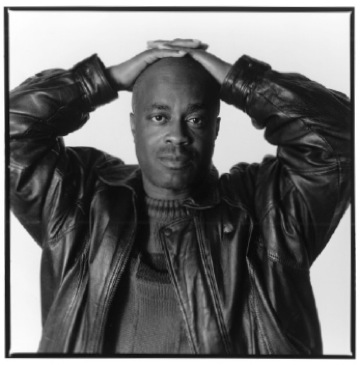
You’d hardly credit how little public attention has been paid to filmmaker Charles Burnett if you read any selection of film critics’ views of him.
Here’s a typical one: “I think,” influential critic Jonathan Rosenbaum wrote in 1996, “a strong case can be made that Charles Burnett is the most gifted and important black filmmaker this country has ever had.”
Still, Rosenbaum said, “there’s a fair chance you’ve never heard of him.”
Over the last three decades and more, Burnett’s rich characterizations and complex narratives of African-American moral and emotional life have hardly qualified him for megaplex distribution. More’s the pity, because he has made some of the most distinctive American films, most notably his 1977 debut feature, Killer of Sheep, which he made as his master’s thesis film, at the age of 33.
In recent years, while public acclaim has remained slight, the archiving, preservation, and restoration community has done its bit to hail Burnett’s idiosyncratic accomplishment. Retrospectives, restorations, and unfailing encouragement have been that community’s important contribution to Burnett’s expanding legacy.
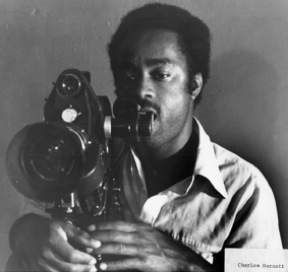
That is just the latest testimony to Burnett. In 2000, the Harvard Film Archive of Harvard University held a retrospective of Burnett’s films. In 2004, the Pacific Film Archive at the University of California at Berkeley did, too – over 10 days. In 2007, Killer of Sheep, had its theatrical debut release after restoration by Ross Lipman and colleagues at the UCLA Film & Video Archive who transferred the film from the original 16mm film to 35mm.
In 2008, the American Film Institute honored Burnett with a retrospective, too. And he received a Lifetime Achievement Award from the 4th Annual Temecula Valley International Film and Music Festival.
The history of Killer of Sheep suggests the nature of Burnett’s career, at once acclaimed and yet prone to all the limitations of working in independent film. It also suggests how esteemed he has been.
While at UCLA, taking his time to complete his degree because being in the college program afforded him access to good equipment, Burnett completed two short films – Several Friends (1969) and The Horse (1973) – before embarking on Killer of Sheep. He worked on that extraordinary project largely on weekends, using equipment checked out from UCLA stores, and filmed to a large degree on black-and-white film scrap from production houses. He used nonprofessionals from Watts – regular people rather than actors – because, as he told the Los Angeles Times in 2007, he wanted to demystify filmmaking for his Watts neighbors: “When I was growing up, the idea of becoming a cinematographer was like going to the moon,” he told the paper. “Kids came up to us, they didn’t even know what the camera was.”
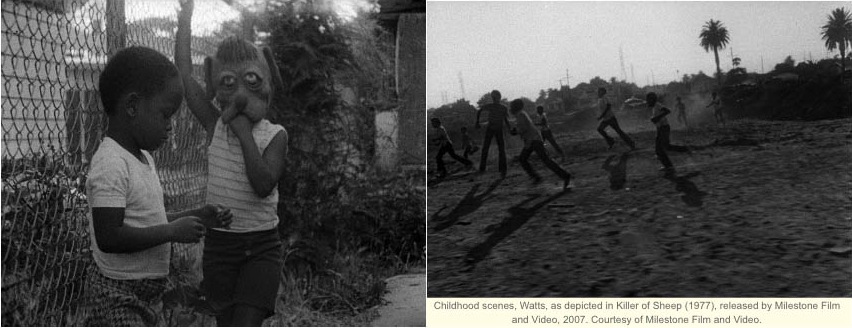
Killer of Sheep, which Burnett shot in the Watts of his youth for less than $10,000, and then edited and produced himself, offered a moving alternative to the blaxploitation genere that was rife in the 1970s. As Dave Kehr wrote in the New York Times, Burnett instead presented Watts as “a community of working-class strivers doing what they can to keep their families together, glimpsed in a series of impressionistic images and fragmented scenes, its rhythms those of chance happenings rather than a four-square, three-act plot.”
The free-spirited film was, Kehr wrote, “the work of a naturally gifted artist who has not yet learned what rules he is breaking.”
Its hero, an earnest young man named Stan (played by Henry Gayle Sanders), gripped by sadness and a persistent insomnia that makes him a “counter of sheep,” works as a “killer of sheep” at a slaughterhouse to support his wife (Kaycee Moore), son (Jack Drummond), and daughter (Angela Burnett, the filmmaker’s niece).
Both killer and victim, Stan’s real problems, Burnett once said, “lie within the family, trying to make that work and be a human being. You don’t necessarily win battles; you survive.”
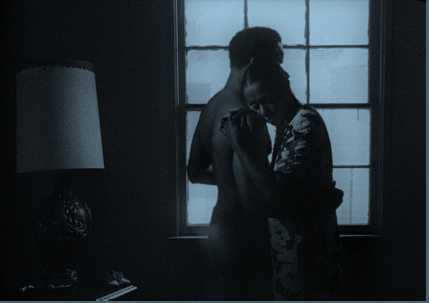
So, even while Killer of Sheep went on to win prizes at the Berlin and Sundance film festivals in the early 1980s, a New York Film Critics Circle Special Award in WHEN, while Burnett in 1988 won a MacArthur Fellowship (“genius grant”), the film looked unlikely to make it out of the eddies of independent film exhibition until 1990. In that year, the Library of Congress chose it as one of the first 50 films on the National Film Registry – as a “national treasure” worth of restoration, and also worthy of funding for restoration.
Just in time – Killer of Sheep’s film stock was turning to vinegar.
The effort to restore and release the film got under way, but UCLA Film & Video Archive was delayed by those music copyrights. Burnett had used carefully chosen tracks by the likes of Paul Robeson, Dinah Washington, Louis Armstrong, Scott Joplin, and Earth, Wind & Fire. In 2007, the UCLA’s Lipman old Dave Kehr of the New York Times that he had finished getting clearances for the music. It had taken him six years rather than the six months he had anticipated, and had cost $150,000 which Milestone could not afford until director Steven Soderbergh contributed half.
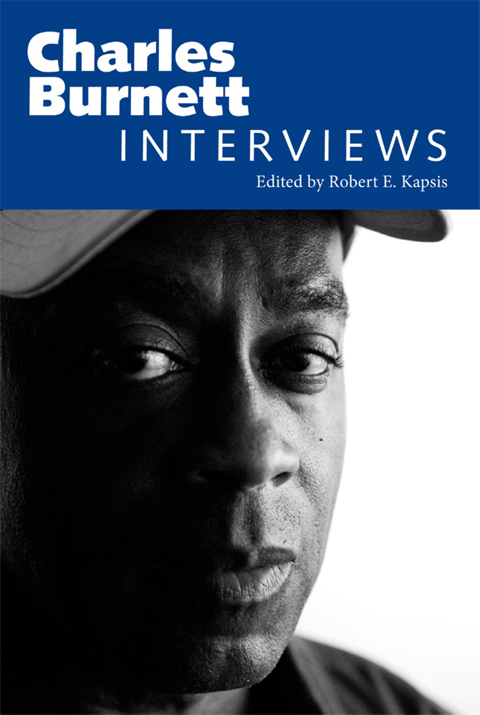
All that acclaim echoed in 2007 when the film finally appeared in commercial release. On GreenCine (www.greencine.com), Susan Gerhard commented: “It’s difficult to locate a single visual or narrative cliché in the story of a slaughterhouse worker’s alienation amongst a family and neighborhood bustling with hopes and hijinks. That may be because the daily lives of African Americans have rarely been treated with the low-fi soulfulness of the cinema vérité-style lens.”
In the Los Angeles Times Mary McNamara called the film “a cinematic tone poem, an elegy, perhaps, or an ode to a certain time and place.”
In the Spring 2007 issue of Filmmaker, James Ponsoldt commented that while the neo-realistic Killer of Sheep is often called “an American Bicycle Thief,” it “may have more in common with the stories of James Joyce, who was famously obsessed with allowing his characters to experience “epiphanies’” – experiences of sudden spiritual clarity in everyday life.
In 2008, Milestone released a Burnett DVD package that included Killer of Sheep (transferred to video by Modern Videofilm), as well as Burnett’s acclaimed short films Several Friends (1969), The Horse (1973), and When It Rains (1995), along with his then-latest short film, Quiet as Kept (2007) about a family displaced by Hurricane Katrina. Also on the set was a Killer of Sheep commentary track with Burnett and Richard Pena, the program director of the Film Society of Lincoln Center, and a Killer of Sheep cast reunion video by Ross Lipman, all with liner notes by Armond White.
Finally, the set included both the original version of Burnett’s second feature, My Brother’s Wedding, from 1983, and a shortened director’s cut that was shown at the film’s theatrical premiere, in 2007 at the IFC Center in New York City. The Pacific Film Archive at the University of California at Berkeley had restored the film.
Kapsis’s book of interviews provides welcome insights into Burnett’s vision and practice. To gather a representative selection of the most measured appreciations of Burnett’s work, Kapsis sifted through major film archives such as The Margaret Herrick Library of The Academy of Motion Picture Arts and Sciences in Los Angeles and The Film Study Center of the Museum of Modern Art in New York. He located about 100 interviews and interview-intensive profiles spanning Burnett’s three decades in filmmaking. He whittled that down to the 27 that appear in his book.
Burnett emerges from the interviews as a true, independent chronicler of black life in America, one who has fought against large obstacles. But he has been doing that since his years in the 1970s in the UCLA Graduate Program in Film and Television Production. There, he and classmates Julie Dash, Haile Gerima, and Billy Woodbury comprised what became known as the L.A. School of Black Filmmakers, or the L.A. Rebellion, for their films that tried to bring fresh perspectives and nuance to their subjects in African-American life. He has advanced a socially engaged cinema that favors a resonant depiction of life in the Watts section of L.A. over trite conceits about black life advanced in Hollywood. He has made low- or no-splash films, noteworthy for their measure and humanity – and for their blunt refusal to bow to clichés of movies about black American: gangs, guns, dope, dysfunction. He told the L.A. Times in 2007: “Hollywood, I don’t think, tries to portray things realistically. When they make movies about the community, you only see drug movies or violence. That perception of black people still exists.”
Like, say, the photographer Roy DeCarava in Harlem, Burnett has been a poet of black life – a “visual novelist,” as critic Lisa Kennedy put it in a 1990 Village Voice article reprinted in Kapsis’s book. He has been the polar opposite of exploitative mythologizer.
For all that, Robert Kapsis says by phone from New York, Burnett in 2011 continues to struggle to win funding for his projects. Two currently in progress have been delayed – one a portrait of President Barack Obama’s mother. “He has been really struggling to get some of his projects realized,” says Kapsis. “He has made a number of movies for television; that’s what he’s been doing last several years; some of them marvelous.”
In his introduction to his volume of interviews, Kapsis describes, for example, the three television films that Burnett directed between 1998 and 2000. Oprah Winfrey Presents: The Wedding (1998) was a two-part miniseries, adapted from a Dorothy West novel about issues of race and class in mid-20th-century black society; Selma, Lord, Selma (1999) was a docudrama about the Civil Rights Movement of the 1960s that aired as part of “The Wonderful World of Disney”; and Finding Buck McHenry (2000) was about a white Little Leaguer’s fascination with a school janitor who may have been a legendary pitcher in the old Negro Baseball League. It aired on Showtime and received a Daytime Emmy for Outstanding Performer (Ossie Davis) in a Children’s Special.
None of those films was based on material written by Burnett himself, Kapsis notes. He quotes Burnett’s response in a 2001 GQ interview to Terrence Rafferty’s asking how he felt about directing other people’s work. Burnett replied: “I’d love to do my own films but it takes so long [and] you have to pay the rent.”
Somehow, Kapsis says, Burnett managed to keep making his own films even during this TV film-for-hire phase. His Nat Turner: A Troublesome Property, about the 1831 slave rebellion in Southampton, Virginia, was part documentary, part fictional re-creation. “The completed film, which aired on Public Television in 2003, doesn’t present one definitive ‘Nat Turner’ but instead, following a Rashomon-like narrative structure, re-creates episodes from Turner’s life from six contradictory texts in which six different actors play him,” writes Kapsis. Burnett, he says, explained that technique as his response to the complexity of Turner’s character and historical role, as suggested by multiple tellings of his legend by writers as diverse as Harriet Beecher Stowe and William Styron.
However, writes Kapsis, Burnett told the Village Voice in 2001 that his and his collaborators’ approach was to try to capture the essence of each of the film’s six inconsistent versions of Nat Turner. He described Turner as “every man who’d fight for the liberation of others, who realized the evils of slavery and wanted his people to live in a normal way. Everyone has inalienable rights, and he, in a sense was interpreting the Constitution. Nat Turner was more American than those whites who denied him.”
It was not the first time Burnett had directly addressed slavery, writes Kapsis. His first television feature, Nightjohn, from 1996, was about a slave who sacrifices his feedom to teach his fellow slaves to read and write. It was, says Kapsis, “a TV movie made for children that is a masterpiece.” In 1998 it received a special award from the National Society of Film Critics for a film “whose exceptional quality and originality challenge the strictures of the movie marketplace.”
Kapsis says of the film: “I find it really amazing that the first movie Burnett made for television turns out to be one of his best.”
With his volume of interviews, Kapsis says, he hopes not only to help Burnett to move ahead with his films, but also “to allow more people to appreciate his genius.”
– Peter Monaghan
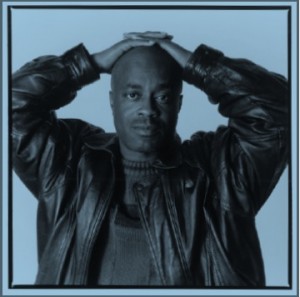 Charles Burnett, 1997. Courtesy of Charles Burnett.
Charles Burnett: The Power to Endure
Charles Burnett, 1997. Courtesy of Charles Burnett.
Charles Burnett: The Power to Endure

Museum of Modern Art, New York City
April 6 to April 25 2011
Here is the likely schedule for the Charles Burnett retrospective at MOMA, organized by Charles Silver, curator of the department of film, and Robert Kapsis, professor of sociology and film studies, Queens College (CUNY). Notes from the program. Showtimes and other details, online.
Killer of Sheep
Wednesday, April 6 (introduced by Burnett); Wednesday, April 131977. USA. Directed, produced, written, photographed, and edited by Burnett. With Henry Gayle Sanders, Kaycee Moore, Charles Bracy, Eugene Cherry. Burnett’s first feature, made while still affiliated with UCLA, is a harsh Neorealist portrait of Los Angeles ghetto life vitalized by the kind of humanism that the director valued in Jean Renoir. Hampered by his inability to secure music rights, Burnett finally saw the film go into general release thirty years after its completion. 80 min.
“A masterpiece. One of the most insightful and authentic dramas about African-American life on film. One of the finest American films, period.” – Dave Kehr, The New York Times
“In retrospect, it can be seen that the two great independent features of the late ‘70s were Killer of Sheep and Eraserhead.” – J. Hoberman, Village Voice
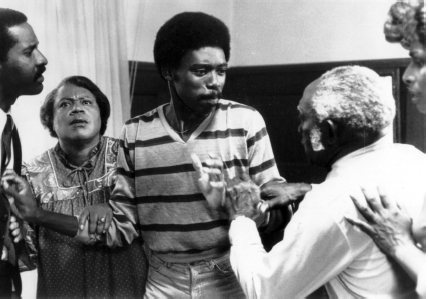 A still from My Brother’s Wedding (1983), released by Milestone Film and Video, 2007. Courtesy of Milestone Film and Video.
A still from My Brother’s Wedding (1983), released by Milestone Film and Video, 2007. Courtesy of Milestone Film and Video.

My Brother’s Wedding
Thursday, April 7 (introduced by Burnett); Saturday, April 9
1983 (Director’s cut: 2007). USA . Directed, produced, written, and photographed by Burnett. With Everette Silas, Jesse Homes, Gaye Shannon-Burnett. A very funny film that highlights the director’s ironic gaze on families. The film is shot in a simple straightforward style with naturalistic performances reminiscent of Martin Scorsese’s Mean Streets. 81 min.
“A film so firmly and organically rooted in a specific time and place that it seems to contain worlds.” – A.O. Scott, The New York Times
To Sleep With Anger
Thursday, April 7 (introduced by Burnett); Saturday, April 16
1990. USA. Directed and written by Burnett. With Danny Glover, Paul Butler, Mary Alice, Carl Lumbly, Vonetta McGee, Richard Brooks. Generally considered a masterpiece with a brilliant performance by Glover, Burnett continues his dissection of families with a vengeance. His acknowledgment of African-American mythology is laced with Ozu-like transitions and rich humor. 102 min.
“Droll, visionary, alarming, ironic, and deeply moving, all at the same time.” – Stuart Klawans, The Nation
The Glass Shield
Friday, April 8 (introduced by Burnett); Wednesday, April 18
1994. USA. Directed and written by Burnett. With Michael Boatman, Lori Petty, Ice Cube, Elliott Gould. Burnett’s first major studio (Miramax) venture is a provocative and suspenseful commentary on the efforts of a young officer to be integrated into the LAPD. His own values are sorely tested, and most of the police come up short on any scale of justice. 115 min.
The Annihilation of Fish
Friday, April 8 (introduced by Burnett); Thursday, April 14
1999. USA. Directed by Burnett. With James Earl Jones, Lynn Redgrave, Margot Kidder. An exercise in bizarre comedy pairs the legendary Jones with the late kid sister of Vanessa Redgrave, with whom he is currently appearing on Broadway. There is the almost-obligatory Burnett wedding scene (with an invisible groom), and Kidder seems to be channeling Beulah Bondi in one of Burnett’s favorite films, Renoir’s The Southerner. Due respect is shown for Puccini and demons, and a good time is had by all, especially the audience. 108 min.
Namibia: The Struggle for Liberation
Saturday, April 9; Saturday, April 23
2007. Namibia. Directed and written by Burnett. Produced by the Namibia Film Commission and the Pan Afrikan Center of Namibia. With Carl Lumbly, Danny Glover. A wide-screen epic chronicling the rise of Sam Nujoma (Lumbly) to leader of SWAPO (South- West Africa People’s Organisation) in the fight to end the South African occupation and his subsequent election as the first president of the independent country. Glover plays a clergyman torn between his religious vows and reality. This widescreen David Lean-like epic, beautifully photographed on location, shows that Burnett can carry his values and obsessions to a much broader canvas when given the opportunity. In mostly English and several other languages, with subtitles. 161 min.
The Wedding
Sunday, April 10; Wednesday, April 20
1998. USA. Directed by Burnett. With Halle Berry, Eric Thal, Lynn Whitfield, Carl Lumbly, Michael Warren, Marianne Jean-Baptiste, Shirley Knight. This Oprah Winfrey-produced television mini-series is based on Harlem Renaissance icon Dorothy West’s late novel. It movingly explores racial conflict within the African-American community and provides Burnett with the chance to make perhaps his ultimate statement on the hazards of having a family. Approx. 140 min
The Final Insult
Sunday, April 10; Wednesday, April 20
1997. USA. Directed by Burnett. With Ayuko Babu , Charles Bracy. This video work intermingles fiction with actuality in a poignant confrontation with homelessness. 70 min.
Bless Their Little Hearts
Thursday, April 14; Friday, April 22
1984. USA. Directed by Billy Woodberry. Written and photographed by Burnett. With Nate Hardman, Kaycee Moore, Angela Burnett, Ronald Burnett, Kimberly Burnett. Reminiscent of Killer of Sheep, Burnett’s collaboration on Woodberry’s film is a low-key portrait of the endurance of life in Watts. Woodberry (and Haile Gerima, director of 1979’s Bush Mama, which Burnett photographed) and Burnett were buddies at UCLA and shared much of their experience and anger. 80 min.
A program of Short Films by Charles Burnett
Friday, April 15; Saturday, April 16
1969-2007. USA. Starting in his student days, Burnett has continued to make short films. A complete listing will be available at www.moma.org. Approx. 90 min.
America Becoming
Friday, April 15
1991. USA. Directed, written (with Dai Sil Kim-Gibson), and photographed by Burnett. Narrated by Meredith Vieira. A prophetic PBS documentary on America’s shifting demographics. 90 min.
Selma, Lord, Selma
Saturday, April 16; Monday, April 18
1999. USA. Directed by Burnett. With Jurnee Smollet, Mackenzie Astin, Clifton Powell, Ella Joyce, Yolanda King, Elizabeth Omilami. This Disney television movie provided Burnett with the opportunity for a deeply-felt tribute to Dr. Martin Luther King and the Civil Rights movement. The film is admirably simple and direct, and the performance by Smollet demonstrates Burnett’s great gift for directing children, so evident in so much of his work. 94 min.
Nightjohn
Sunday, April 17; Saturday, April 23
1996. USA. Directed by Burnett. With Carl Lumbly, Beau Bridges, Lorraine Toissainte, Bill Cobbs, Allison Jones. A Disney television movie that movingly recreates the plantation life of slavery, deals (as always) with the complications of family, and is marked by superb performances. 96 min.
“Although narrated in the simple, straightforward style of a typical family movie and filmed with picture-book prettiness, Nightjohn is no cop-out when it comes to confronting the day-to-day horrors of slavery…Beautifully acted, with a superb teleplay by Bill Cain, the film has the resonance of a classic fable.” – Stephen Holden, The New York Times
Finding Buck McHenry
Sunday, April 17; Monday, April 25
2000. USA. Directed by Burnett. With Ruby Dee, Ossie Davis, Ernie Banks, Michael Schiffman. In this Showtime television movie, Davis plays a school custodian who may have been a star in the Negro Leagues. Dee, had played opposite Jackie Robinson in his film biography a half-century earlier. Now she comes full cycle, playing opposite her husband (Davis) and the great Chicago Cubs infielder, Ernie Banks, whose career was made possible by Robinson’s courageous pioneering. 94 min.
Panel of Charles Burnett collaborators and critics
Monday, April 18
Details at www.moma.org. Approx 120 min.
Nat Turner: A Troublesome Property
Thursday, April 21; Sunday, April 24
2003. USA. Directed and written (with Frank Christopher and Kenneth S. Greenberg) by Burnett. With Carl Lumbly, William Styron, Henry Louis Gates, Burnett. Narrated by Alfre Woodard. This is a Public Television documentary exploring the differing views on the leader of the 1831 slave rebellion. 58 min.
Warming By the Devil’s Fire (episode 4 from the PBS documentary series, The Blues)
Thursday, April 21; Sunday, April 24
2003. USA. Directed and written by Charles Burnett. With Tommy Redmond Hicks, Nathaniel Lee, Jr. Narrated by Carl Lumbly. This veritable history of the Blues includes much archival footage of Muddy water, Bessie Smith, Dinah Washington, and many others. In Burnett’s hands, it becomes an autobiographical exploration of his own roots in the South. 106 min.
“I always wanted to do a story on the blues that not only reflected its nature and its content, but also alludes to the form itself…In short, a story that gives you the impression of the blues.” – Charles Burnett.
Relative Stranger
Friday, April 22; Monday, April 25
2009. USA. Directed by Charles Burnett. With Cicely Tyson, Eriq La Salle, Michael Michele, Michel Beach, Dan Castellaneta. This Hallmark Channel television movie is an angst-ridden drama about passion and tension in a middle-class family, kept in line by wise matriarch Tyson. 88 min.
Previous Post: Academy Honors Kevin Brownlow
Next Post: Preserving the Films of Charles Burnett

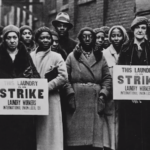
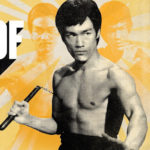
Thank you. I recently came upon his work on another film and committed his name to memory. I instinctively knew he was in a category of his own. QC 85’Anthro.